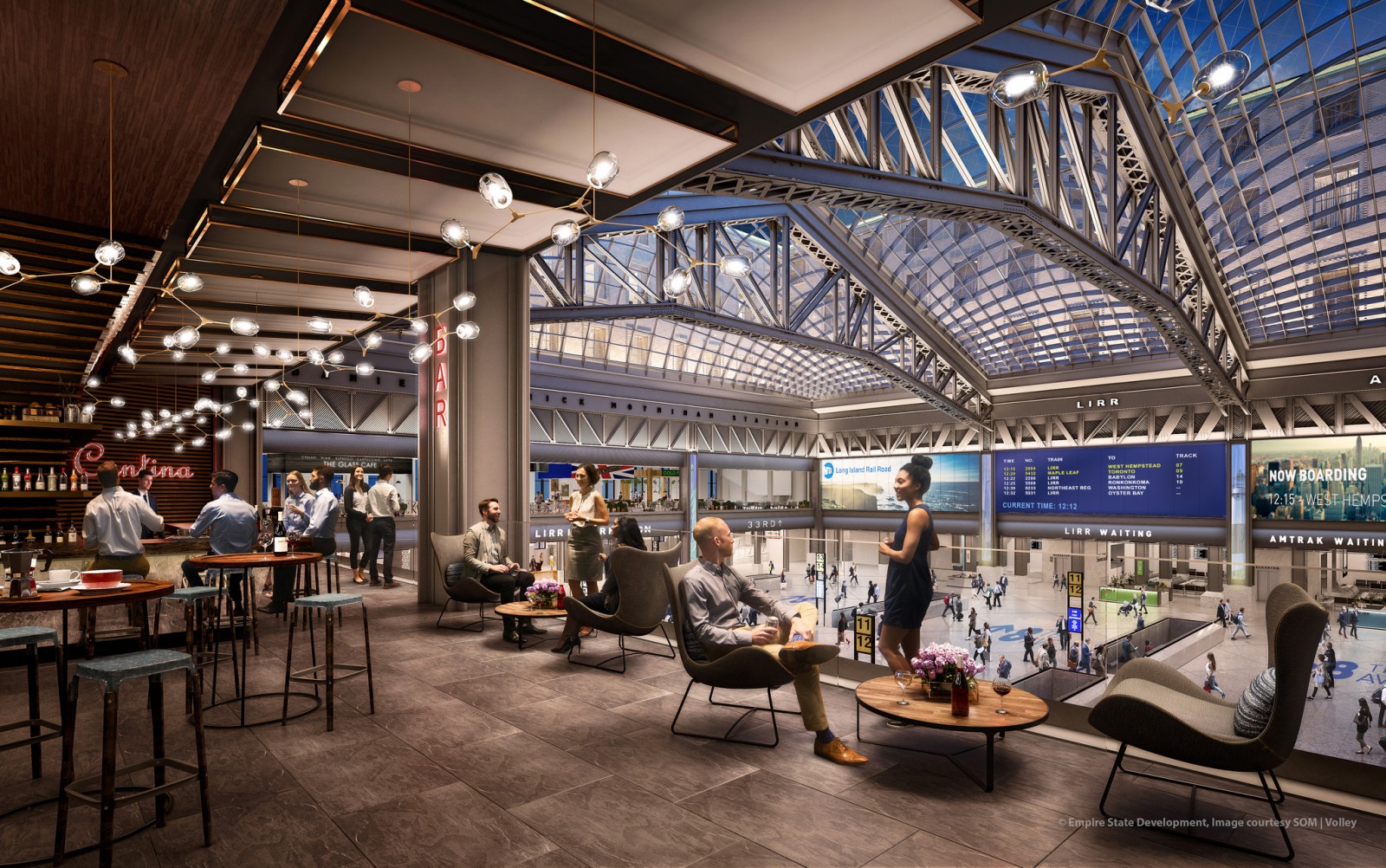
(Source: Skidmore, Owings and Merrill)
The redevelopment of the Farley Post Office building is a big moment in the progression of New York City architecture, preservation and urban planning. Learning a lesson from history’s mistakes, the iconic post office building on Eighth Avenue will not be left to neglect or razed, but instead, be incorporated into the revitalization of Penn Station and the new Moynihan Station. Although the combination the two adjacent structures is confirmed and currently under construction, the post office building’s future did not always seem so promising.
Despite serving as the main USPS post office in New York City and at one time being dubbed “the most elaborate post office in America” by the New York Times, its early glory and prowess fell into deep neglect starting in the late 1980s and only recently found renewed life in Governor Cuomo’s 2016 commitment to renovate both Penn Station and the Farley Post Office.
In anticipation of the building’s transformation into a modern transportation hub, photographer Margaret Morton endeavored to document the abandoned interiors of Farley’s back offices. StreetEasy got a sneak peak at Morton’s work displayed in the original Postmaster General’s Office at the Farley Building last night. Her exhibition was accompanied by presentations by Open House New York and the Moynihan Station Development Corporation about the progress of the new station. Here we review the event and provide an overview of the history and architecture of the original Farley Post Office building.
The Architecture of the Farley Post Office
The Farley Post Office is perhaps best known for its impressive facade and structure. It was designed by McKim, Mead & White, the prolific team of architects who were also behind the design of the old Penn Station, which sat just across the street from the post office itself. Facing Eighth Avenue along the front facade of the building is a triumphant Corinthian colonnade – the largest in the world. Although sandwiched between two impossibly hectic avenues, congested with throngs of commuters, delivery trucks and tourists, this facade is a New York City icon and a breathtaking vista to take in – even while being buffeted by masses of angry and confused pedestrians.
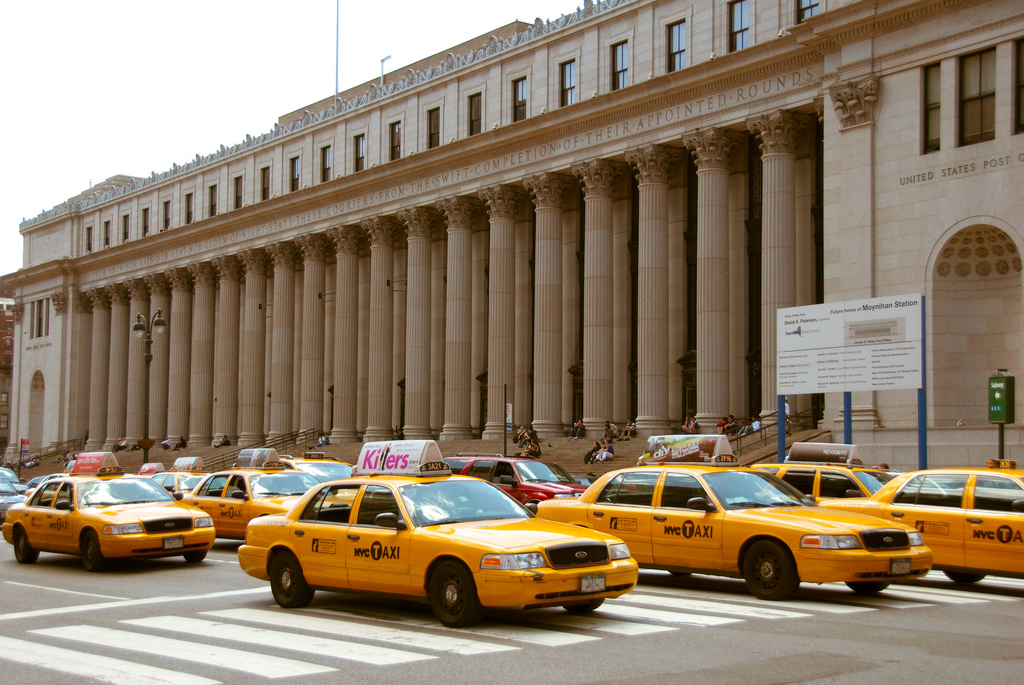
In front of the Farley Post Office on Eighth Avenue. (Source: Damien Roue via Flickr Creative Commons)
Emblazoned across the entablature of the colonnade is the United States Postal Service’s famous credo “Neither snow nor rain nor heat nor gloom of night stays these couriers from the swift completion of their appointed rounds.” The line is taken from the Herodotus’ Histories. It’s a classic and enduring work of political commentary and it goes without saying that the bold statement has engrained itself in the city’s history, pop culture at large and the hearts and minds of many a New Yorker.
Leading up to this colonnade is a sweep of steps that spreads across the entire facade and opens up onto the post office’s lobby where the USPS general custom service operations takes place. The lobby presents an enormous interior space, flooded with light from high upper windows and recalls something between a 19th-century train station and gilded, Beaux-Arts airplane hanger. Fitting perhaps then that this space will ultimately become a world-class, 21st-century transit hub.
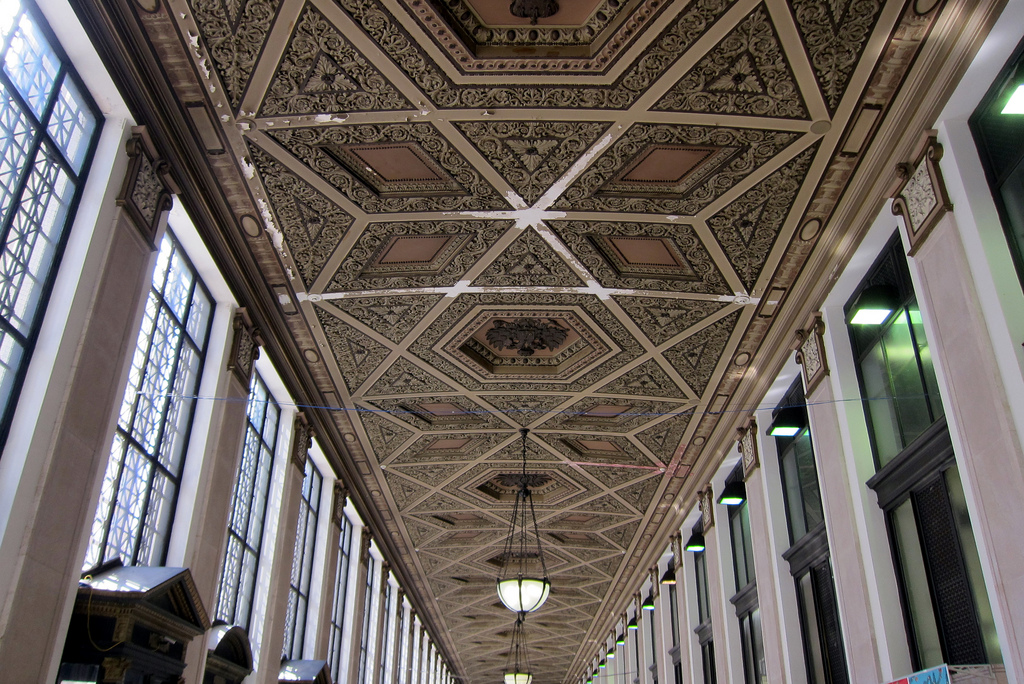
(Lobby at the Farley Building Post Office. Source: Wally Gobetz via Flickr Creative Commons)
At the time of construction, the juxtaposition of the original Penn Station and the post office was a powerful display of the both the city and the nation’s innovation and industry. Penn Station, of course, fell victim to the desire for renewal when it was razed in 1963, a notorious low point for architecture and urban planning in the city. The demolition of Penn Station, however, paved the way for the preservation of iconic buildings like the post office building, ushering in a new wave of consciousness about historic buildings. Just two years after Penn Station was demolished, the NYC Landmarks Preservation Commission was formed to champion and administer the Landmarks Preservation Law and in 1966, the post office received designation as a landmark.
The History of Operations at the Farley Post Office
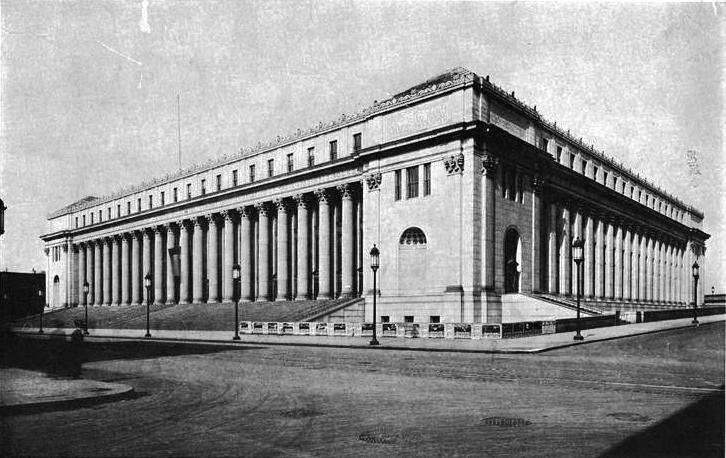
(The footprint of the Farley Post Office building. Source: Dayton in New York)
When the post office first opened in 1914, the building, then known as the General Post Office Building, spanned an entire city block of Eighth Avenue between 31st and 32nd Streets and the interiors encompassed nearly an acre of square footage. Twenty years later, in 1934, the building footprint further expanded when the postal service took over an adjacent building a block away. This new building – often referred to as the western annex – was connected to the original via tunnel. As a result of the expansion, the postal complex came to occupy two full city blocks in the heart of Midtown Manhattan and the equivalent of eight acres. At the height of its operation in the late 1960s, the Post Office Building was responsible for handling a tenth of all U.S. mail and employed over 10,000 people. In 1982, the complex was renamed the James A. Farley Building after the Postmaster General responsible for the 1934 expansion.
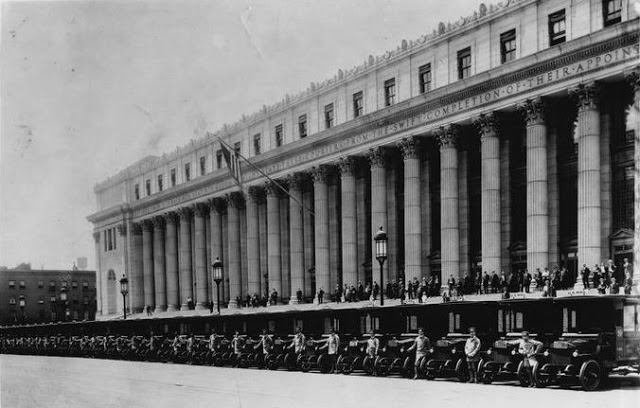
(Mail trucks being dispatched from the Farley Building Post Office circa 1914. (Source: Dayton in New York)
Decline of the Farley Post Office
The technological advances and modernity that the building originally represented, however, began to fall by the wayside in the late 1980s. As fax and email began to overtake traditional mail, the importance of the building’s services began to decline. Once touted as the only post office open 24 hours, the Farley Building cut back its operating schedule in 2009 due to declining demand. As mail traffic continued to decline in recent years, more and more of Farley’s services have been cut back. Technological changes have also sped the obsolescence of the Farley Building as many of the old processing, distributing and transporting techniques have been replaced. The Morgan Postal Center on Ninth Avenue and 29th Street serves as the new home for USPS internal operations. As it stands today, the only operating part of the Farley Building’s nearly eight-acre footprint is the front lobby of the building where you can still ship packages and purchase stamps.
Plans and Redevelopment of the Farley Post Office
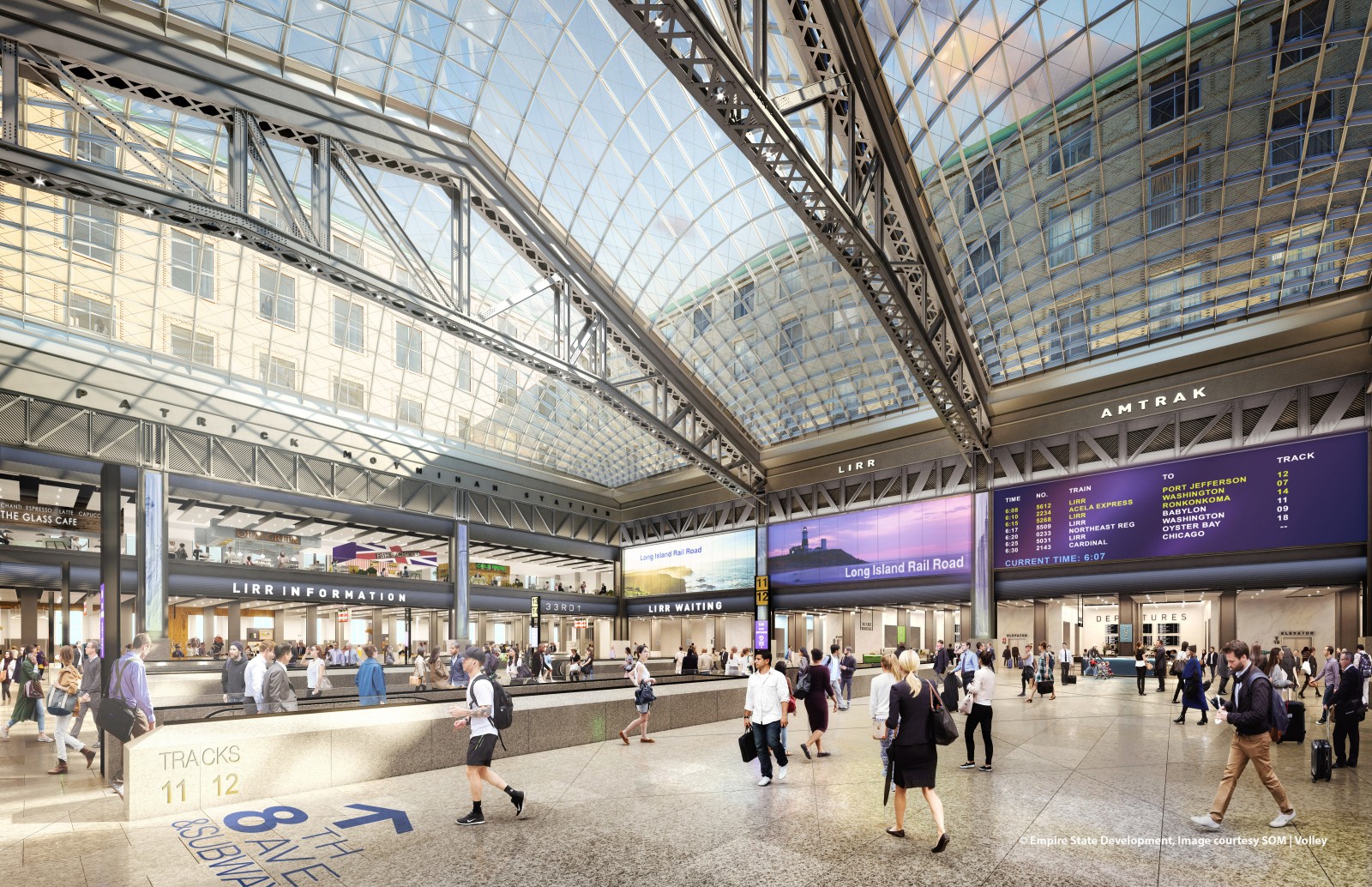
(Source: Skidmore, Owings and Merrill)
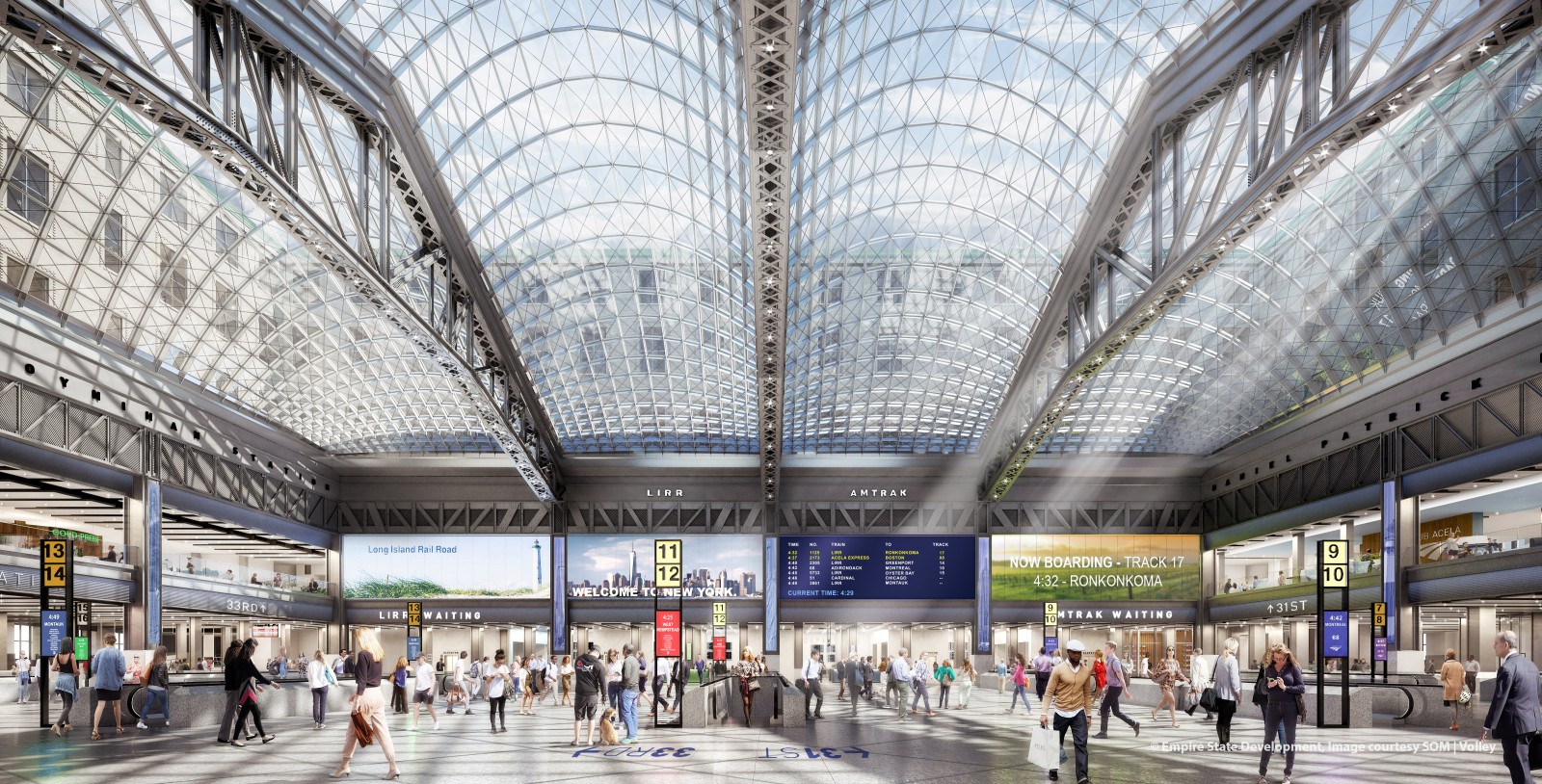
(Source: Skidmore, Owings, and Merrill)
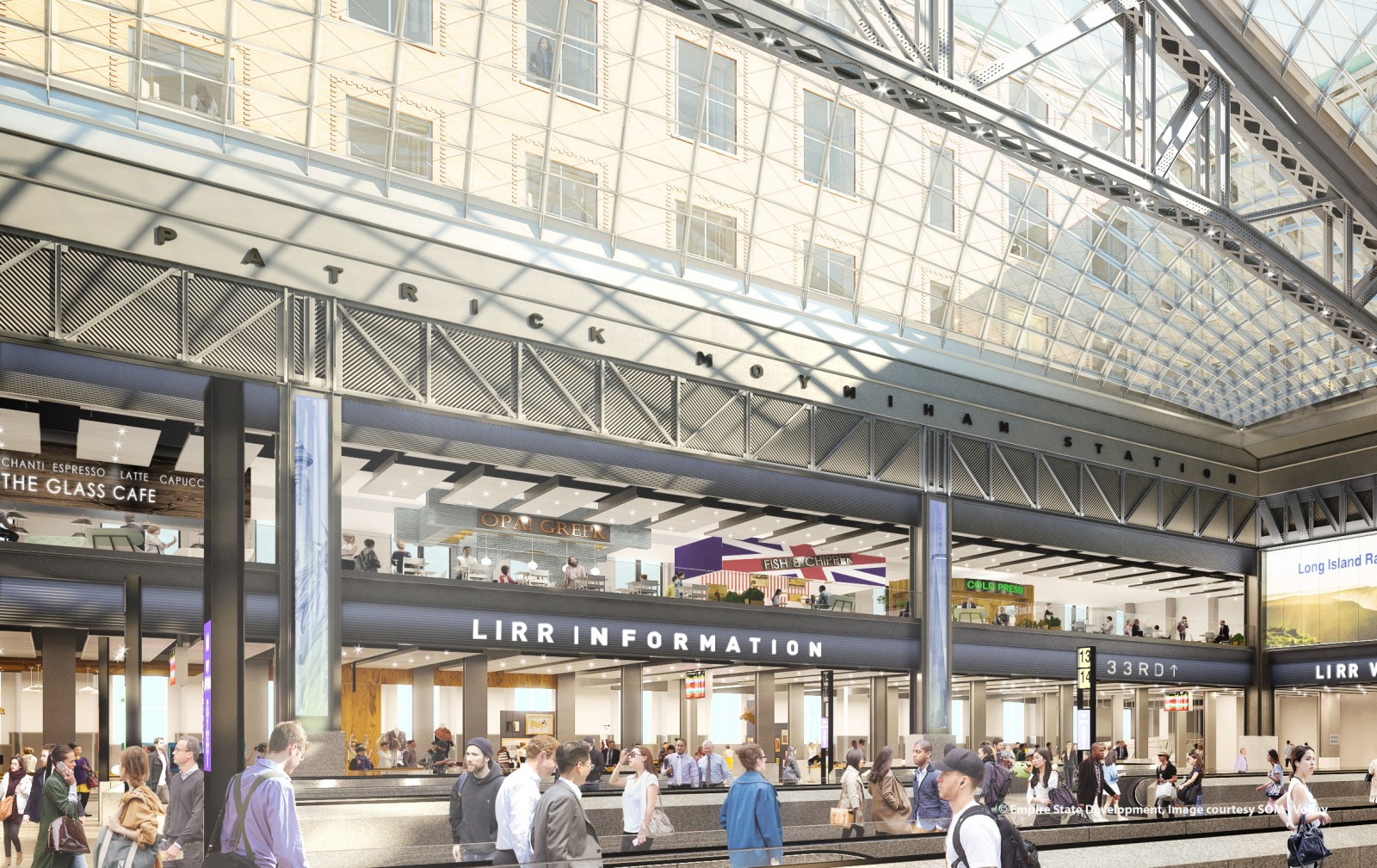
(Source: Skidmore, Owings and Merrill)
Inside the Farley Post Office
To celebrate the arrival of the new Moynihan Station, Open House New York (OHNY) has teamed up with the Moynihan Station Development Corporation, the public works agency behind the project. Last night, the two groups partnered in hosting “Inside the Farley,” a private viewing and reception of photographer Margaret Morton’s project documenting the abandoned backrooms and internal spaces of the iconic post office building. The event was also prefaced by an introduction from Roy Kim, OHNY President of the Board, and Michael Evans, President of the Moynihan Station Development Corporation. Evans put the partnership between OHNY, Margaret Morton’s photographs and the coming Moynihan Station in clear context, citing the demolition of Penn Station as one of the greatest travesties of civic infrastructure and the need to embrace, uphold and protect public spaces.
Morton, a professor of photography at The Cooper Union and long-time documentarian of New York City life and architecture, explored the Farley Building over the course of several months, capturing the disused offices and decaying remnants of the once bustling operation. Like many New Yorkers, Morton was familiar with and a fan of the building. In her words, she describes the building as an “old friend… a place whose presence and impact in your life you take for granted.” Prior to her private exploration, Morton’s interactions with the Farley mostly involved dashing into the lobby at the eleventh hour to post a time-sensitive document before the stroke of midnight.
Just about every New Yorker remembers a night like this – running up the huge, seemingly interminable set of steps and into the grand lobby, praying there’s no line in hopes that their application, check, love letter — whatever it is — gets posted in time. Although this experience is near universal for New Yorkers, access and insight into what goes on beyond the lobby is rare. Morton’s pictures reveal this, exposing the decaying backstory and back offices of one of the nation’s largest mail operations. Take a look below to view some of the hidden spaces that Morton so exquisitely captures.
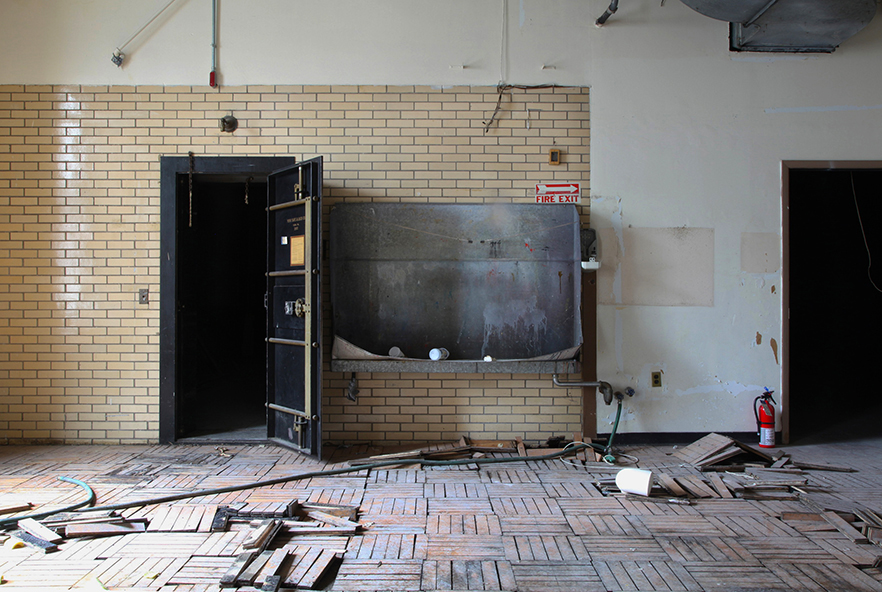
(Source: Margaret Morton)
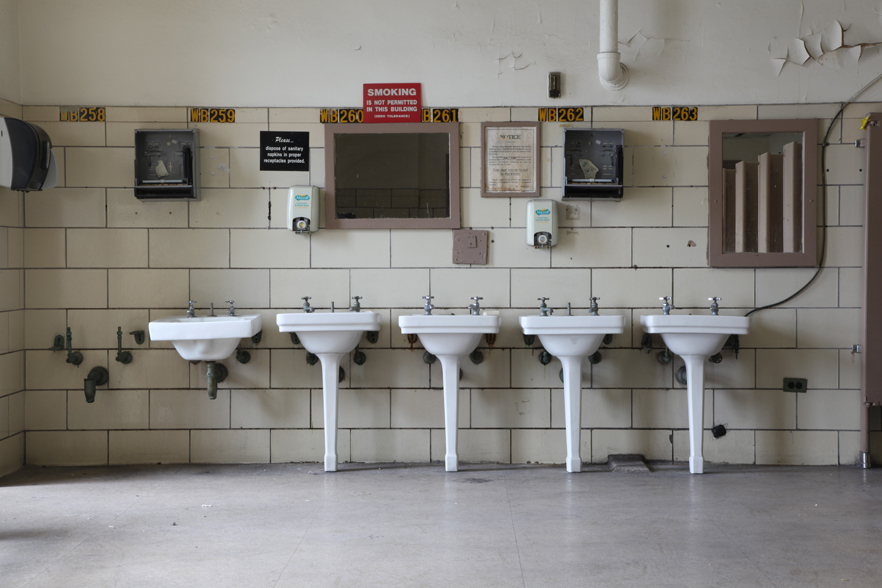
(Source: Margaret Morton)
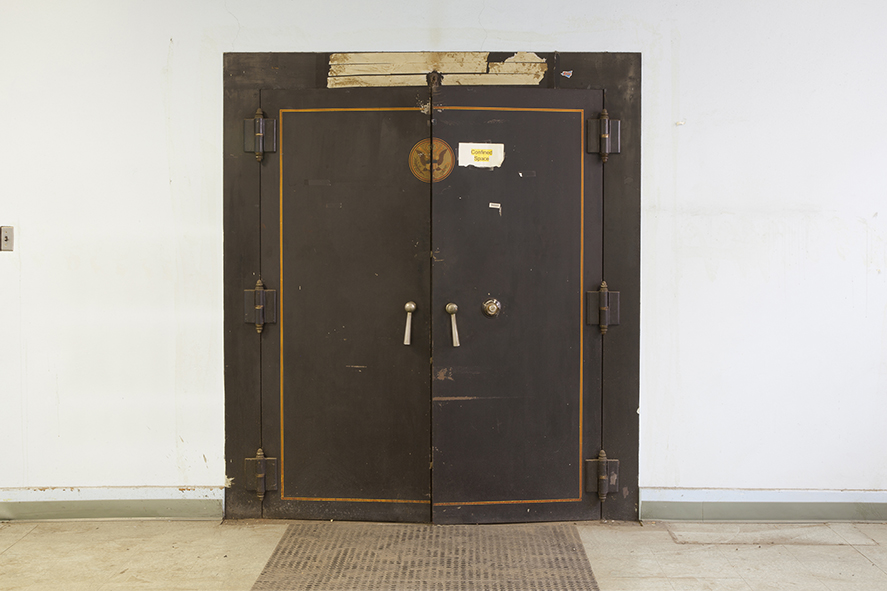
(Source: Margaret Morton)
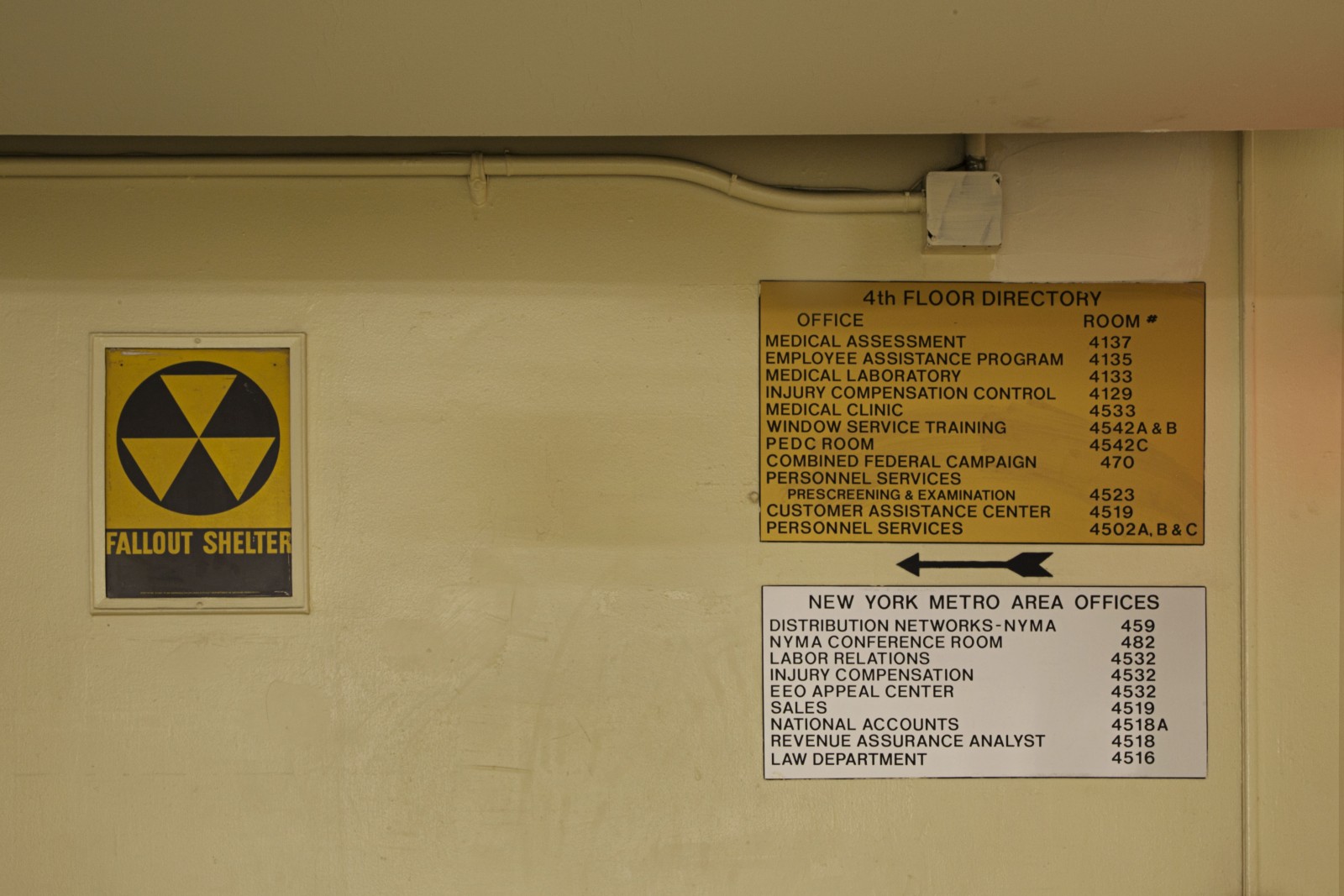
(Source: Margaret Morton)
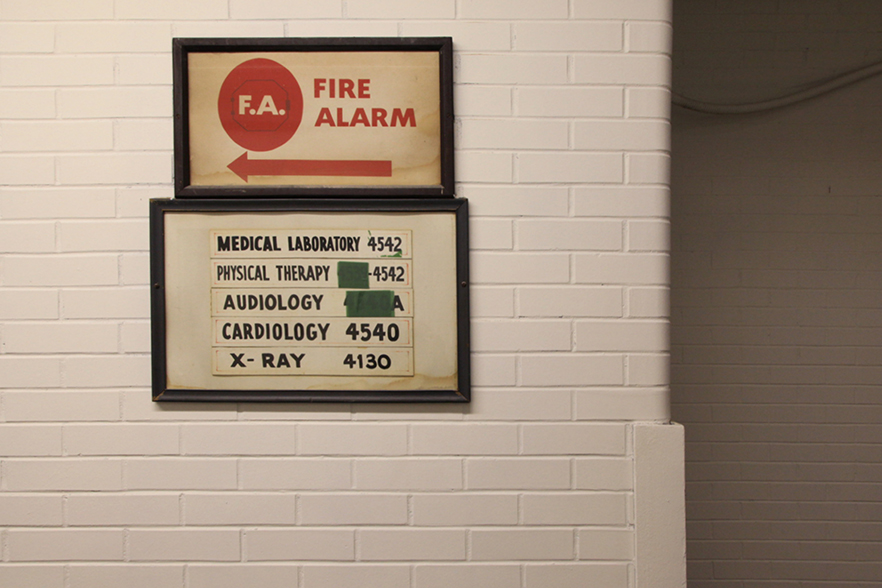
(Source: Margaret Morton)

(Source: Margaret Morton)










